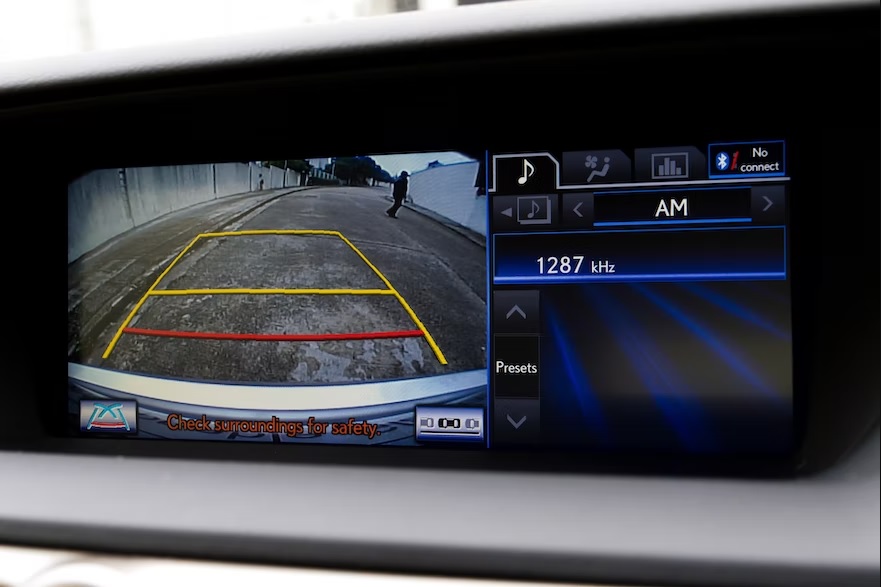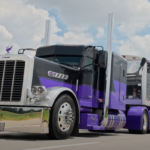Gideon Kedem, a world traveler, has noticed that in many countries, including India, heavy-duty commercial trucks are operated by two drivers, where one guides the other while backing up into tight spots. However, in the US, this practice is not as common due to the shortage of drivers. This means that a sole driver has to exit the truck and walk the 53 feet to check for clearance, which poses injury risks and can lead to time loss. With an aging driver population and supply chain challenges, this extra step has become an even greater obstacle to efficiency.
Backup cameras have become a standard feature on newly manufactured cars in the US since 2018. However, in the heavy-duty commercial trucking industry, installing backup cameras is considered a luxury due to the challenges that come with their installation on such large vehicles. Gideon Kedem, the Senior Vice President and Head of Automotive Business at Valens Semiconductor, explained the magnitude of these challenges. Valens Semiconductor has recently released its VA600R chipset, which is specifically designed to address the rear-view visibility issues that tractor trailers face.
“There are, in the market, wireless solutions. If you use wireless, you can solve this challenge of crossing from the trailer to the tractor, but wireless is not very reliable – much more exposed for electromagnetic interference,” Kedem said. “You cannot afford that while the truck is backing in, suddenly there’s a glitch, no picture, at exactly the same time where a small kid is running behind the truck. So reliability is an issue.”
Gideon Kedem is referring to the Electromagnetic Interference (EMI) environment, which can disrupt the connection between the backup camera and the truck’s display, whether the connection is wireless or via a connected jumper cable. To overcome this issue, Valens Semiconductor’s VA600R chip transmits data at a low frequency, which helps maintain a strong signal across the link. The chip also includes advanced Digital Signal Processing (DSP) technology that enables reliable and resilient signal distribution, further improving the backup camera’s performance.
As tractors and trailers are separate units, there is a significant gap between them, which creates an area susceptible to electromagnetic interference. In order to ensure that the backup camera can function properly, it needs to bridge this gap using the existing cable infrastructure that connects the two units. The VA600R chipset from Valens Semiconductor achieves this by utilizing the truck’s standard jumper cable and a simple UTP cable, which helps maintain a high-speed, high-bandwidth link capacity. This ensures that a clear and reliable video link is maintained from the back of the trailer to the cabin up front.
“Today, when you are connecting a trailer to a tractor, there are some standard cables already implemented on all trucks and trailers. But they have different functions, and you don’t really have an available cable to transmit the video,” Kedem said. “We took the power cable, which is giving power to the trailer – giving the trailer the ability to have lighting around it, the blinker signals, the braking system; all those signals need power to come from the engine to the back of the trailer. So we are crossing this bridge here over a standard power cable. This is very challenging technology. It’s a very unstable link; very noisy, so we’re actually the only one who is able to deliver video over power.”
According to Kedem, another challenge with backup cameras on commercial trucks is the vehicle’s length. As the distance that data must travel increases, so does the signal attenuation and the impact of EMI. However, the VA600R chipset from Valens Semiconductor overcomes this challenge through its advanced DSP technology and low-frequency transmission. This allows the VA600R to distribute high-speed, error-free data over longer distances of up to 131 feet/40 meters without the need for expensive signal repeaters, while still maintaining a strong and reliable signal throughout the link.
“If you combine all of this together, what we are giving is a cost-effective solution, using a very low-cost harness and reliable link because of our fine digital file to deliver a very strong noise-cancellation mechanism, basically securing error-free link and accessing the operational flexibility for the fleets,” Kedem said.
Another challenge in installing backup cameras on commercial trucks is that the owner of the tractor is often not the owner of the trailer, which creates a problem when it comes time to drop and hook the trailer. One solution is to use a dedicated cable, but this can be expensive and not every tractor and trailer may have the necessary connectors unless they are owned by the same company that can afford to install dedicated cables across all assets. Valens Semiconductor’s VA600R chipset addresses this issue by utilizing the power cable, which is already present on both the tractor and the trailer, thus avoiding the need for a dedicated cable.
“The fact that we are using connectivity over power is enabling mix and match. The trailer can disconnect from one truck to move to another tractor; you just connect the standard cables with the power and plug and play and you have the rearview system working,” he said. “If you were installing it with a dedicated separate cable, you wouldn’t have this operational flexibility.”
Kedem announced that Stoneridge, a leading supplier of electronic systems to the automotive industry, will be the first customer to receive Valens Semiconductor’s VA600R chipset in the second quarter of this year. He expects Stoneridge to take the chipset into production towards the end of the year, making it available to Original Equipment Manufacturers (OEMs) next year.





